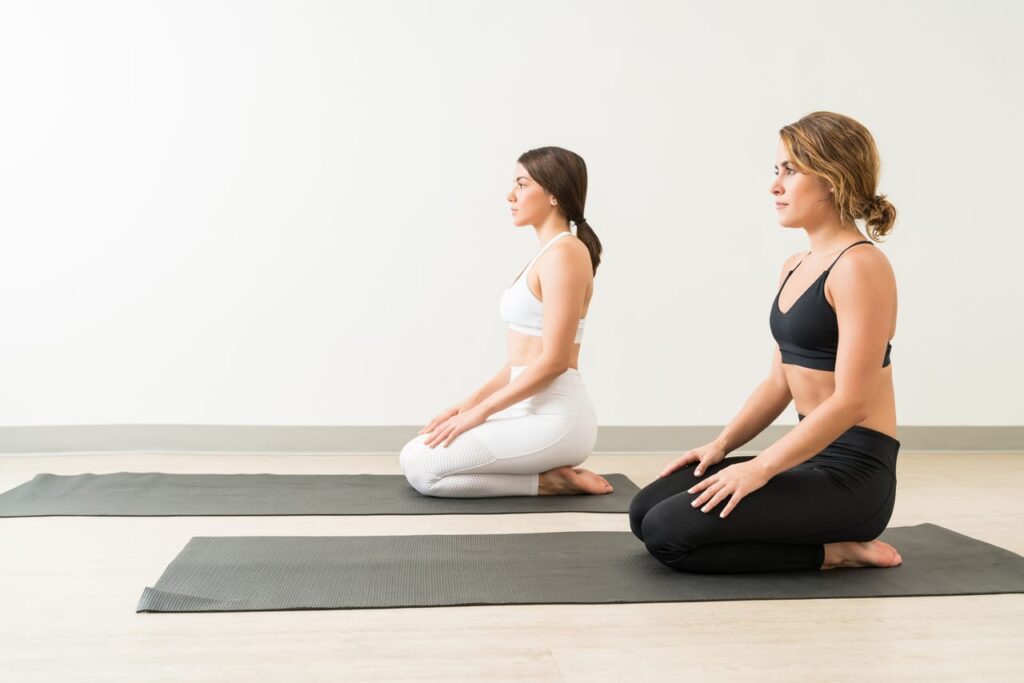Vajrasana, a yoga pose with a rich history rooted in Hindu beliefs, derives its name from the divine weapon “Vajra” associated with Indra, the king of Gods. The name itself signifies the pose’s power, likened to the thunderbolt wielded by Indra. This posture holds significance in a yogi’s spiritual journey, known as Sadhana.
Another interpretation of Vajrasana connects it to a Nadi linked to the Muladhara chakra, believed to help in controlling high sexual energy. Referred to as the adamant pose or diamond pose, Vajrasana symbolizes firmness and strength, just like a diamond.
Performing Vajrasana involves sitting back on your heels, aligning the body with a straight back and relaxed neck, and resting the palms facing downward on the thighs. The gentle inhalation through the nostrils and holding the pose for at least three minutes are recommended. Variations like Supta Vajrasana and Laghu Vajrasana challenge practitioners with reclined and advanced postures, respectively.
When combined with the Gyan Mudra, Vajrasana enhances overall well-being by strengthening pelvic and lower back muscles, improving knee joint flexibility, and promoting mental focus and serenity. This synergy between Vajrasana and Gyan Mudra can alleviate stress, aid digestion, and bring inner peace.
The functional aspect of Vajrasana includes improved blood flow, muscle strength, digestive health, and relief from pain. Regular practice can enhance posture, alleviate back discomfort, and promote mental well-being. The pose also aids in conditions like heel pain and calcaneal spurs.
The ideal frequency of practicing Vajrasana depends on individual physical condition and goals. Daily practice is recommended for overall well-being, starting with shorter sessions and gradually increasing duration. It’s crucial to listen to the body’s signals and adjust the practice accordingly.
Vajrasana’s impact on emotional well-being is profound, promoting grounding, stability, and relaxation. The pose encourages mind-body connection, aiding in managing emotions and enhancing mental clarity and concentration. Practicing Vajrasana can be a valuable tool for stress and anxiety management.
While Vajrasana offers numerous benefits, precautions should be taken for individuals with specific health conditions like knee or joint problems. Consultation with a professional is advised for those with limitations or discomfort. Integrating Vajrasana into a comprehensive approach to health and well-being can maximize its benefits.
In conclusion, Vajrasana is a versatile yoga pose with multifaceted benefits for physical, mental, and emotional well-being. When practiced mindfully and with care, it can be a valuable addition to a holistic wellness routine.

